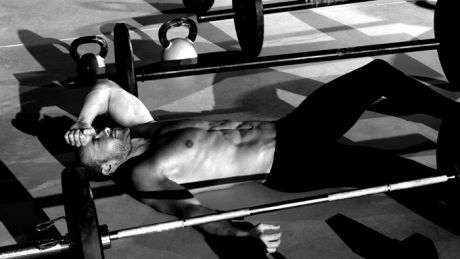An argument for not training to failure
Michael Blevins is an expert in competitive fitness, but doesn't believe in training to failure. Here's why

With CrossFit on the rise, the idea of doing workouts ‘for time’ – basically, racing to get the reps in – has never been more popular. This is no surprise. It’s easy for coaches to write a workout on the board and tell everyone to do it as fast as possible, and for people who’ve never trained, anything works for a while. When you’re a beginner, this is a good way to ensure you get some hard work in. But once you can handle heavier weights, too much intensity risks the results.
At the top level of any sport, athletes do most of their training at around 80% of their maximum, a level that could be labelled ‘easy’, and only the remainder at what you’d call ‘intense’. If you’re trying to improve athleticism for gym-based events, it makes sense to train in a similar way – using progressive overload to force your body to adapt.
It’s about time
One of the best ways to attain the highest level of fitness is to achieve the highest possible level baseline adaptation – what you can achieve without overloading your body. How you do this depends on the sport. In running, it might be the ability to run for an hour at a specific pace, and in lifting it might be volume of weight lifted. What I’d like to introduce is the idea of working at an intensity defined by reps per minute.
The aim is to find a threshold for training and then improve it, pacing according to your fitness. For instance, I often have an athlete do a ‘Death by Burpees’ workout. They do one rep in the first minute, two in the second and so on, increasing the reps until failure. Once the athlete fails, I can conclude that a proper training stress would be about 75% of that number – so if he makes it to round 18, he should be able to do 13 reps in a minute without too much trouble, but won’t be able to maintain much more.
Then you can escalate the intensity on a cycle of three to eight weeks, nudging it up by about 5% a week, see below. This adds stress in a way that lets the body adapt, without taxing it beyond its ability to recover.
When you’re training, not competing, you should always feel there’s more in the tank, or even that it’s too easy. Any frustration you feel should allow for anticipation of event day. Remember, training is only preparation for competition: save your best effort for the day.
For more from Blevins visit gritandteeth.com
Get the Coach Newsletter
Sign up for workout ideas, training advice, reviews of the latest gear and more.
Find your race pace
- Pick a move such as press-ups or kettlebell swings and do it ‘Death by’ style: one rep on the first minute, two on the second and so on until you can’t go on.
- Note the minute when you hit failure and multiply it by 0.75 for your training pace. Next time you train, do that number of reps every minute for 20min.
- Up the pace by 5% every week for three weeks, then retest with another 'Death by' session. Your score should have gone up.
